Question by : where can i meet christian singles?
where can i meet christian singles
Best answer:
Answer by Nox
A church…
Know better? Leave your own answer in the comments!
Question by : where can i meet christian singles?
where can i meet christian singles
Best answer:
Answer by Nox
A church…
Know better? Leave your own answer in the comments!
Some cool christian singles images:
La comedia de las cosas 3
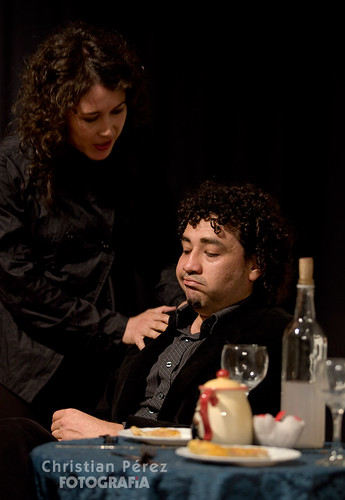
Image by Toro_33
La Comedia de las Cosas
de Martin Suter
Pablo, el gerente de productos, llega cada noche a su departamento de soltero, saca sus compras y prepara su pizza congelada en el horno. El trabajo no anda bien anda y últimamente está demasiado solo: no habla con sus vecinos, sus amigos no le devuelven las llamadas telefónicas y Susi, su novia, lo ha dejado hace poco. No obstante, él mira todo de manera diferente: es un ganador, un soltero que casi no puede escapar las mujeres y de los amigos que lo persiguen, logró que Susi se fuera para ayudarla a soltarse emocionalmente de él y está convencido que ella es una “mujer de un solo hombre” que está desesperada por volver.
Esta noche, sin embargo, algo pasa en su departamento: en un hecho totalmente inesperado, su sofá le hace ver que no es un “single”, sino que está solo; su cojín de flores le revela los creativos usos que Susi, la “onemanwoman”, le ha dado en situaciones comprometidas y su chaqueta Hugo Boss trata de estimularlo para que salgan de bares y conozcan gente.
¿Su sofá?, ¿su cojín?, ¿su chaqueta? Sí. Otros roles principales los desempeñan: un “puff” atrevido, un cojín de botón, una pizza, un psiquiatra y la ex novia
Ready to set sail / Listos para zarpar

Image by . SantiMB .
La Rábida, Huelva (Spain).
ENGLISH
On the evening of August 3, 1492, Columbus departed from Palos with three ships; one larger carrack, Santa María, nicknamed Gallega (the Gallician), and two smaller caravels, Pinta (the Painted) and Santa Clara, nicknamed Niña (the Girl). (The ships were never officially named). They were property of Juan de la Cosa and the Pinzón brothers (Martin Alonzo and Vicente Yáñez), but the monarchs forced the Palos inhabitants to contribute to the expedition. Columbus first sailed to the Canary Islands, which was owned by Castile, where he restocked the provisions and made repairs, and on September 6, he started what turned out to be a five-week voyage across the ocean.
Land was sighted at 2 a.m. on October 12, 1492, by a sailor named Rodrigo de Triana (also known as Juan Rodríguez Bermejo) aboard Pinta. (Columbus would claim the prize.) Columbus called the island (in what is now The Bahamas) San Salvador, although the natives called it Guanahani. Exactly which island in the Bahamas this corresponds to is an unresolved topic; prime candidates are Samana Cay, Plana Cays, or San Salvador Island (named San Salvador in 1925 in the belief that it was Columbus’s San Salvador). The indigenous people he encountered, the Lucayan, Taíno or Arawak, were peaceful and friendly. In his journal he wrote of them, "It appears to me, that the people are ingenious, and would be good servants and I am of opinion that they would very readily become Christians, as they appear to have no religion." He also wrote of them, two days after landing, "I could conquer the whole of them with 50 men, and govern them as I pleased."
Source: en.wikipedia.org/wiki/Christopher_Columbus#First_voyage
————————–
CASTELLANO
Cristóbal Colón, en representación de los Reyes Católicos de España, realizó cuatro famosos viajes desde Europa a América en 1492, 1493, 1498 y 1502. En el primero de ellos llegó a América el 12 de octubre de 1492, a una isla de las Bahamas llamada Guanahani, cuya exacta localización aún se discute. En el tercer viaje llegó a territorio continental en la actual Venezuela.
El primer viaje de Colón se inició en Palos de la Frontera, el 3 de agosto de 1492. La escuadra colombina estaba formada por las carabelas Pinta, Niña y Santa María. Para el equipamiento de las naves fue decisiva la colaboración de los hermanos Pinzón, que participaron también en el viaje. Colón se dirigió hacia las Canarias y desde la isla de Gomera se lanzó a la travesía del Atlántico (6 de septiembre). El 12 de octubre llegó a la isla Guanahaní (Walting, en las Bahamas), a la que llamó San Salvador. Arribó después a la isla de Cuba, bautizada con el nombre de Juana, y posteriormente a La Española. El 25 de diciembre encalló la carabela Santa María y con sus restos construyó un fuerte llamado Navidad, en el que dejó una pequeña guarnición. Con las dos naves restantes, la Pinta y la Niña, emprendió el viaje de retorno (16 de enero de 1493). Durante la travesía las dos naves se separaron. Colón llegó a Palos el 15 de marzo y marchó a Barcelona para informar a los reyes de su descubrimiento.
Fuente: es.wikipedia.org/wiki/Descubrimiento_de_Am%c3%a9rica
Skyline
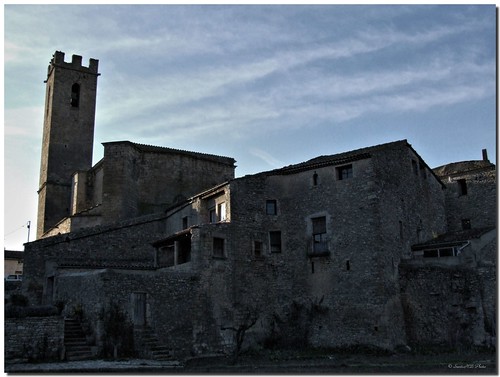
Image by . SantiMB .
Conesa, Tarragona (Spain).
1ª Sortida enfoca: Guimerà-Conesa (gener 2009).
ENGLISH
Conesa is a municipality of the Catalan region of Conca de Barberà. According to data of 2005 its population it was of 133 inhabitants.
In 1043, Ramon Berenguer I yielded these lands to Bernat Sunifred so that he is in charge of his reconquers and later repopulation. In 1154 it passed to depend on the archdiocese of Tarragona. From 14th century, the place was into the hands of the monastery of Santes Creus. The monastery obtained the complete jurisdiction of the place in 1383 by donation of Pedro the Ceremonious. Santes Creus maintained its dominion until the aim of lordships in 1835.
In 14th century the city was walled. They are left still on some rest as well as two of its gates: the Royal Gate or of Sant Antoni and the gate of Santa Maria. The nucleus of houses that is within the walls is made up of five narrow streets. Still it conserves its medieval aspect with old arcades.
The origin of place name is not clear. According to the historian Manuel Sanchis i Guarner it would come from the Arab term kunaisa that means “Christian church”. Other versions indicate that the origin of the name is in Latin iou condensa (great thickness), alluding to the lushness of the forests that surrounded the population.
————————-
CASTELLANO
Conesa es un municipio de la comarca catalana de la Conca de Barberà. Según datos de 2005 su población era de 133 habitantes.
En el 1043, Ramón Berenguer I cedió estos terrenos a Bernat Sunifred para que se encarga de su reconquista y posterior repoblación. En el 1154 pasó a depender de la archidiócesis de Tarragona. A partir del siglo XIV, el lugar estuvo en manos del monasterio de Santes Creus. El cenobio obtuvo la jurisdicción completa del lugar en 1383 por donación de Pedro el Ceremonioso. Santes Creus mantuvo su dominio hasta el fin de las señorías en 1835.
En el siglo XIV se amuralló la ciudad. Quedan en pie algunos restos así como dos de sus puertas: el Portal Reial o de Sant Antoni y el portal de Santa Maria. El núcleo de casas que se encuentra dentro de las murallas está compuesto por cinco calles estrechas. Aún conserva su aspecto medieval con porches antiguos.
El origen del topónimo no está claro. Según el historiador Manuel Sanchis i Guarner provendría del término árabe kunaisa que significa "iglesia cristiana". Otras versiones indican que el origen del nombre está en el latín iou condensa (gran espesura), aludiendo a la frondosidad de los bosques que rodeaban la población.
Más info: es.wikipedia.org/wiki/Conesa_(Tarragona)
A few nice christian singles images I found:
The Underground Lake

Image by Pathos Photos
Buy Prints | Blog | Google+ | China Photo Book
There is a series of cave systems that run under the huge mountains of Guilin in southern China. Reed Flute Cave is one of the more famous ones so I made a slight detour to go check it out. Like most places in China, there were a good number of tourists around so I quietly waited for them to pass so that I could have the place to myself and take pictures. The problem was that they would turn off the lights as soon as the tourists passed by so I was often left in the middle of a huge underground chamber with nothing but my cat eyes to guide me to safety. It was a little bit eerie, but all together awesome! I would point my camera at the ceiling and leave the shutter open for minutes at a time to collect all the faint light reflecting off some distant stalactite.
I finally made my way to the largest chamber where a mini lake made a perfect reflection of the alien-looking rock formation on the other end. As I was waiting for my camera to gather all the light, my mind started to wonder what was lying deep in this ancient underground lake. As I kept staring at the dark water, listening to the single drops of water sliding off the stalactites and delicately swan-diving into the lake, I started to feel a hypnotic pull to walk into the lake. Lucky for me I was traveling with my guide, Bart, who tripped over something, made a loud noise and brought me back to the present moment … and that is why you hire a guide, ladies and gentlemen. They can keep you from taking a dip in scary underground lakes.
My Little Secret Revealed: Part 1
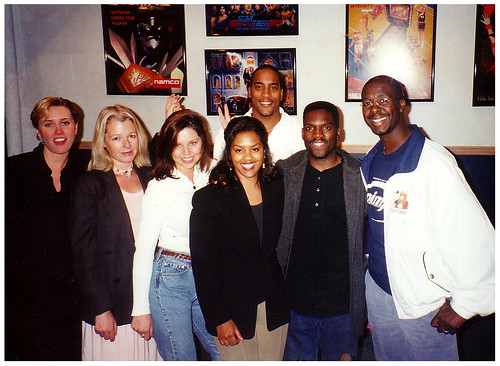
Image by Shavar Ross
1997. The Hard Rock Cafe’. Hollywood. My son’s 4th birthday party. Lol, only in Hollywood will a 4 year old have a birthday party at the Hard Rock Cafe’. You probably already know who had more fun! Don’t worry, Chuck E. Cheese came the next year. To the left of me is my wife Jacqueline. On the right of me is a guy I ran into named Rodney Allen Rippey. When I first came to town he was already a kid tv star and veteran in the business! Back in the day, Rodney was "tha man"! He’s famous for those old Jack In The Box commercials. Hmmm…I wonder if he still gets free food from them. Really nice guy.
Behind me is Sean, Tyler’s dad! Y’all remember Tyler, right? Out of all my photos on Flickr, Tyler’s is my second most viewed. Ah, but this is my favorite one I took of her. Kids…they just grow up too fast!
Anyway, many of you don’t know this about me but this was somethin’ I used to do on the side, lol…
In 1992, instead of going to USC’s film school, I attended bible college instead. Many of my peers thought I was crazy for practically leaving the acting business and dedicating 8 years of my life to the ministry.
I finally completed 4 years of biblical studies at The Ministry Training Institute, an auxiliary of one of the largest churches in Los Angeles. After graduating, I founded The Alive Church, a non-denominational church in Hollywood in which I pastored for 4 years.
I taught and preached the bible to my congregation every single Sunday for 207 "straight" weeks (4 years) until I literally got sick from exhaustion and could not go on. I tried so hard to impress the overseers of my "home church" but my little church never seemed to grow "big" enough for them…so, after realizing and finding out that the "business" of the organized church was very political, I opted out. In many ways, the "church world" was worse than the very place I deserted 8 years before; Hollywood.
All in all, I have not one regret about the choices I’ve made! It was one of the most exciting times of my life! I still believe in the local church very much so today so you church goin’ folks stay, don’t leave. However, know that the "real" church is inside you.
Finally, if there was any church cooler, it was The Alive Church! It was the place where I learned to write and direct. Lot’s of cool, contemporary plays…with really great actors! Except for Rodney, these were some of my first church members.
The exciting part is, now, thanks to Podcasting technology and iTunes, I now get to bust out tons of my old preachin’ tapes and upload them to my new podcast feed! Maybe I’ll start speakin’ again, I don’t know. Encouraging and speaking positive things to people gave me strength to live.
©2005 Facebook.com/Shavar
A few nice christian singles images I found:
Christmas in jewish quarter / Navidad en el cayo judío
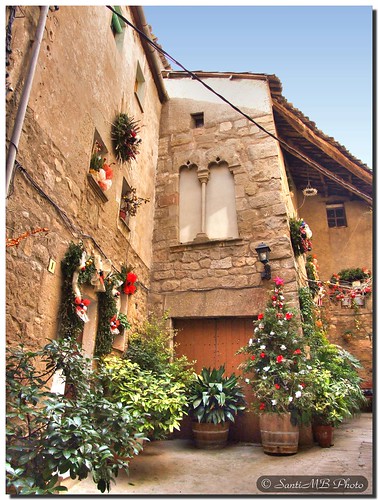
Image by . SantiMB .
Torà, Lleida (Spain).
ENGLISH
The town of Torà is located at the foot of the mountain range of the Aguda, between the Llobregós river and the watercourse of Llanera. The Llobregós goes from east to the west, forming a spit that stretches slightly perpendicular in the northern limit of the Segarra, with landscaping, topographic, geologic and gastronomical characteristics different from the rest of the region.
Throughout the line that forms this river, during 10th century, it existed the border between the Christian counties and the Islamic world. To the north, the Christians; to the south, the Saracens. Also it distinguishes clearly two landscapes; in the part of above, forests and isolated country houses; in the part of down, where it is based most of the present population, it extend the smooth cerealistic undulations of the Segarra.
The town of Torà is the most important and dynamic locality of these contours fruit of its industrial growth, thing that has not made him lose the aspect eminently agriculturist and cattle farmer of typical town of the Segarra. Torà has its origin at medieval time, the narrow alleys of the old district, places setting of porches, quiet and calm, they are a clear testimony.
The old Jewish quarter of Torà is located in what is now Carrer Nou, in the very centre of the old part of the village. Access to this area is through two portals. One is located in the Plaça de l’Església and the Portal Nou provides entry from the Plaça del Pati. This area is surrounded by small squares, narrow streets and very steep alleys that help recreate the atmosphere of the medieval village.
Close by, we find the old bakery, which now houses the bread museum. The first businesses of Torà were established in its Jewish quarter We know this from the entrances to some of the houses that still maintain the specific typology of the medieval Jewish shops, with the entrance on the left and the counter on the right of the facade for serving clients from inside the shop.
The lintels of many houses also serve as valuable material witnesses to the presence of the Jewish population. Some houses still bear the engraved symbol of Christ with the date and name of the owner. According to some historians, this identified Jews who had converted to Christianity.
A number of wealthy families lived in the Jewish quarter of the village, including the Baron of Morrocurt, and the Mujal and Aldabó families. The donations of the latter served to set up the wheat shop or “poor people’s shop” and the village Hospital.
Sources: www.lleidatur.com/ing/culturajueva.html
——————-
CASTELLANO
La villa de Torà se encuentra situada al pie de la sierra de la Aguda, entre el río Llobregós y la riera de Llanera. El Llobregós va de este a oeste, formando una lonja que se estira ligeramente perpendicular en el límite septentrional de la Segarra, con unos rasgos paisajísticos, topográficos, geológicos y gastronómicos diferentes del resto de la comarca.
A lo largo de la línea que forma este río, durante el siglo X, existía la frontera entre los condados cristianos y el mundo islámico. Al norte, los cristianos; al sur, los sarracenos. También distingue claramente dos paisajes; en la parte de arriba, bosques y masías aisladas; en la parte de abajo, donde se asienta la mayoría de la población actual, se extienden las suaves ondulaciones cerealísticas de la Segarra.
La villa de Torà es la localidad más importante y dinámica de estos contornos fruto de su crecimiento industrial, cosa que no le ha hecho perder el aspecto eminentemente agrícola y ganadero de típica villa de la Segarra. Torà tiene su origen en época medieval, los callejones estrechos del barrio viejo, cubiertos de porches, silenciosos y tranquilos, son un claro testimonio.
La antigua judería de Torà se localiza en la actual calle Nueva, en pleno núcleo antiguo de la población. Se accede a ella por dos portales, uno situado en la plaza de la iglesia y por el portal Nuevo, con entrada por la plaza del Patio. Está rodeada de plazuelas, calles estrechas y callejones de fuerte pendiente, que recrean el ambiente de la antigua villa medieval.
Muy cerca encontramos el viejo horno comunal, que hoy alberga el museo del pan. En el barrio judío de Torà se estableció el primer comercio de la población. Dan fe de ello las entradas de algunas casas que todavía conservan la tipología propia de las tiendas medievales judías, con el acceso a la izquierda y el mostrador a la derecha de la fachada para servir a los clientes desde dentro de la tienda.
Los dindeles de muchas casas son también un valioso testimonio material de la presencia de los judíos en la población; en algunos casos todavía tienen grabado el símbolo de Jesús, sigla según algunos historiadores de los judíos conversos, además de la fecha y el nombre del propietario.
Residieron en la judería familias acomodadas de la población, como el barón de Morrocurt, los Mujal o los Aldabó, éstos últimos fundadores con sus donativos de la tienda del trigo o de los pobres y del hospital de la localidad.
Fuentes: www.turismesegarra.com/pobles/tora.asp, www.lleidatur.com/esp/culturajueva.html
The sound of water / El sonido del agua

Image by . SantiMB .
El Generalife, Granada (Spain).
ENGLISH
It occupied the slopes of the Hill of the Sun (Cerro del Sol), from which there is a complete view over the city and the valleys of the rivers Genil and Darro. There are different interpretations of the meaning of its name: the Governor’s Garden, the Architect’s (alarife) Garden, the Vegetable Garden of the Gypsy Festivity Organiser, etc. The Generalife became a leisure place for the kings of Granada when they wanted to get away from the official affairs of the palace.
It was built in the 13th century and it was redecorated by the king Abu I-Walid Isma’il (1313-1324), as it is explained by an inscription that dates from 1319. This means that the Generalife was built before the Comares Palace. In spite of it being very close to the Alhambra and the close relationship between the two complexes, it is considered to be outside the city. A rebellion against Mohammed V even broke out in the Alhambra while he was in the Generalife.
Nowadays the Generalife is formed by two groups of buildings connected by the Patio of the Irrigation Ditch (Patio de la Acequia).
Nevertheless it is difficult to know what the Generalife originally looked like, as it has been altered and rebuilt at different moments throughout the Christian period. These changes were at first necessary due to the sorry state of deterioration and neglect that was the result of the late Muslim period and later on they changed its layout and distorted many of its features.
In the Generalife there is no kind of decorative excess or points of interest in its architecture. Unlike the Alhambra, all the buildings of the Generalife are quite solid, but in general poor and simple. This indicates an intimate and peaceful atmosphere that the kings were looking for when they retired to these gardens to rest. There are only some decorative motifs of plasterwork, which are not very varied, but are exquisitely fine and tasteful.
Source: www.alhambradegranada.org/historia/alhambrageneralifeintr…
——————————-
CASTELLANO
Ocupa las pendientes del Cerro del Sol, desde el que se abarcan toda la ciudad y los valles del Genil y del Darro. Del significado de su nombre existen distintas interpretaciones: Jardín del Intendente, del Arquitecto (alarife), Huerta del Zambrero, etc. El Generalife se convirtió en lugar de recreo para los reyes granadinos cuando éstos querían huir de la vida oficial del palacio.
Se construyó a mediados del s. XIII, y según reza una inscripción de 1319, el rey Abu I-Walid Isma’il (1313-1324) lo redecoró, lo que lo hace anterior a la construcción de Palacio de Comares, A pesar de su proximidad a la Alhambra y de su estrecha relación entre ambos conjuntos, se consideraba fuera de la ciudad, incluso estalló una rebelión en la Alhambra contra Mohamed V mientras éste se encontraba en el Generalife.
En la actualidad, el Generalife está formado por dos conjuntos de edificaciones, conectados por el Patio de la Acequia.
Sin embargo, es difícil saber el aspecto original del Generalife, ya que ha ido sufriendo modificaciones y reconstrucciones durante toda la etapa cristiana, en un principio necesarias debido al estado de deterioro y abandono en que se encontraba en la última etapa musulmana, pero que posteriormente perturbaron su disposición y desfiguraron muchos de sus aspectos.
En la construcción del Generalife no podemos encontrar ningún tipo de exceso decorativo, ni grandes actuaciones arquitectónicas. Al contrario que en la Alhambra, toda la edificación del Generalife, aunque sólida, es en general muy pobre y muy simple, lo que señala el aire de intimidad y de sosiego que buscaban los monarcas al retirarse a descansar entre sus jardines. Únicamente encontramos motivos decorativos de escayola poco variados, pero de extremada fineza y buen gusto.
Fuente: www.alhambradegranada.org/historia/alhambraGeneralifeIntr…
Spinners on the Great Lawn

Image by Ed Yourdon
This is where Filthy Pierre decided to burn a cross on Easter Sunday … which, as I vaguely recall, occurred during our sophomore year. I don’t know if anyone ever found out why he did it — it may have been a protest against the Pope, or Catholics, or all Christians, or perhaps just a way of thumbing his nose at the authority figures at MIT.
Anyway, we all assumed that the Easter Sundayt prank was the reason that Filthy Pierre disappeared from campus … though there were rumors that he had found a way to import cheap textbooks from Hong Kong, which violated some copyright restrictions, and which eventually attracted the attention of the police…
Note: for some reason, this photo was published in a Jul 2, 2011 blog titled "Nice Christian Singles photos."
***********************
It was a lifetime ago that I stumbled off a Greyhound bus in downtown Boston, a clueless 17 year old kid with two suitcases that held all my worldly possessions. I dragged them out to the street (no roll-aboard suitcases in those ancient times), and asked a taxi driver to take me to an address in Cambridge that I had scribbled on a scrap of paper: 77 Massachusetts Ave.
"Aye," the driver muttered, in a dialect that never did become familiar during the next several years. "SebendySebenMassAve."
When he dropped me off, I noticed two things. First, enormous stone steps leading up to the entrance to an imposing granite building. And second, a long line of scraggly, sloppily-dressed young men stretching from the building’s entrance down toward the street where the taxi had dropped me. Aha, I thought: I’m not the only one who forgot to fill out the official form requesting a dorm room.
Welcome to MIT.
I waited in line for two hours before being assigned temporarily, with two other equally absent-minded, newly-arrived MIT students, to sleep on mattresses in an East Campus dorm room that had initially been assigned as a "single" room to an understandably annoyed fellow from Cincinnati. One of the other temporary misfits, whom we immediately nicknamed "Filthy Pierre," had just arrived from Paris with nothing but one large, heavy duffel bag that he dragged into the room. Its contents consisted of miscellaneous telephone parts, which he dumped on the floor and kicked under the bed before wandering out of the room to explore Boston. (He had not showered in weeks, and he was eventually expelled for burning a cross on MIT’s Great Lawn on Easter morning. But that’s another story.)
Thus began my four-year experience at what many still consider America’s premiere scientific/engineering university. That I survived and graduated is a minor miracle; and while I’ll hint at the adventures along the way, in this Flickr set, you’ll have to look elsewhere for the details…
I continued to live in Cambridge for a couple of years after I graduated; took a couple of graduate courses in AI and computer science, taught a couple summer MIT classes to innocent high school students (one of whom challenged me to write the value of pi on the blackboard, to 100 places, from memory – which I did), took full advantage of MIT’s athletic facilities, and 25-cent Saturday-nite movies at Kresge auditorium, which always featured the enormously popular RoadRunner cartoons, and occasionally walked through the same halls and pathways that I had first explored as an overwhelmed undergraduate student. But then I got a new job, moved to New York City, got married, settled down, and began raising family. After that, I typically travelled to Boston two or three times a year on business trips, but never seemed to have time to come back to MIT for a casual visit.
But one of the advantages of a near-fanatical devotion to the hobby of photography is that you begin to appreciate that all of the experiences you internalized and took for granted need to be photographed — for posterity, if nothing else. Some of my most vivid memories of MIT, which we took for granted – like the huge,red, neon, flashing/pulsating "Heinz 57" sign out on the northern edge of the (Briggs) athletic fields — are gone. Some of the legendary professors and deans have died and commemorative plaques have been erected in their honor. And there’s a whole lot of new stuff – mostly new buildings and laboratories, whose specific purpose is a mystery to me – that I just have to shrug and accept.
But the basic campus is still there. And the memories are just as vivid as they were, so many years ago. I can’t say that I captured them all in this Flickr set; the photos were taken at sunset one evening, and dawn the following morning. But they’ll give you an idea of what it was like, a long long time ago, in a galaxy far, far away … and what it’s still like today.
Question by Yeah it’s me…………….: What is a good free Christian singles website?
Have any of you had success with a good Christian singles website?
Best answer:
Answer by Kimmy
Not until now, I didn’t even know they existed!
Know better? Leave your own answer in the comments!
Question by maleener2190: Where is the best place to find Christian singles in Los Angeles?
besides church
Best answer:
Answer by fenchurch_fox
Church.
Give your answer to this question below!
Question by shutterbug60: Does anyone know of any good Christian singles dating sites that are totally free to join and email members?
Best answer:
Answer by xo Sara
im christian and single
What do you think? Answer below!
One By One: Homeschool Group Leader’s Guide To Motivating Members
Mega-resource Giving Servant Leaders Proven Strategies And Inspirations Of How To Motivate Their Members To Be Actively Involved In The Homeschool Group And Their Volunteers To Happily Keep Coming Back To Help The Group.
One By One: Homeschool Group Leader’s Guide To Motivating Members
A few christian singles products I can recommend:
The Rule Of 20: Survival Guide
Survive The Crisis. The Rule Of 20 Gives You The Plan You Need To Survive In A Crisis Or Disaster.
The Rule Of 20: Survival Guide
A few nice christian singles images I found:
Aged house
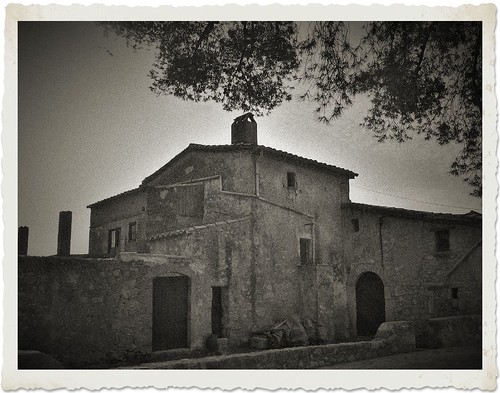
Image by . SantiMB .
Castellet i La Gornal, Alt Penedés, Barcelona (Spain).
This is a tipical rural house in Catalonia.
Castellet i La Gornal is located in the reservoir of river Foix, between the regions of Garraf, Baix Penedés and Alt Penedés.
It stands out by its castle of century X, also called of Sant Esteve. It was a fortress that defined the limit between Marca Hispánica (christians) with Al-Andalus (muslims). In century XVI it was destroyed, and it was reconstructed in 1925 for particular use by Mr. Peray. At the moment it belongs to the Fundació Castellet del Foix that has carried out the restoration until the present state.
Artizen HDR with Lock06 tone mapping. Removed TV antenna, applied gaussian noise, soft vignette and platinotype effect.
Platinotype is a monochrome photographic printing process, based on the light-sensitivity of ferric oxalate.
Ferric oxalate is reduced to ferrous oxalate by light. The ferrous oxalate then reacts with platinum (II) (or palladium II) reducing it to basic platinum, which builds up the image.
William Willis discovered the process in 1873 and the first platinum paper reached the market in 1881, produced by the Platinotype Company, a firm founded by Willis in 1879.
When Willis invented the process, platinum was relatively cheap, but it quickly became more costly starting in 1906. In 1907 platinum had become 52 times more expensive than silver. Eastman Kodak and most other producers stopped fabrication of the paper in 1916. Russia controlled 90% of the world platinum supply in World War I and all available platinum was used in the war effort.
Due to the shortage of commercial paper and high cost, photographers experimented with palladium paper and platinum-palladium mixes. Platinum paper has continued in use until the present, interrupted only by the world wars.
Source: en.wikipedia.org/wiki/Platinotype.
Impression, Bamboo Forest – Cuarta
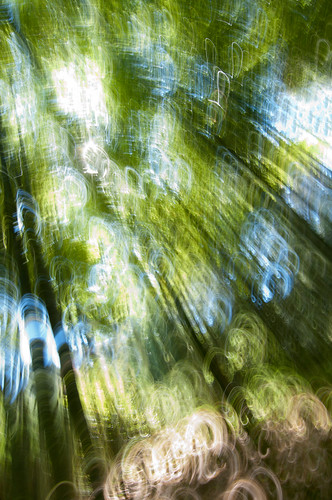
Image by Pathos Photos
Buy Prints | Blog | Google+
About This Collection
This collection of photographs was the result of a happy mistake while walking through the Hakone Garden’s bamboo forest in Saratoga. I was messing around with my camera on manual mode, trying different angles and motions when I noticed the resulting images resembled impressionist paintings. I liked how the bamboo forest was implied though color, light and movement, so I sat there for a while and tried different things until I got the look I wanted. All of these photographs are single shots with very minor adjustments in Photoshop.
S Stefano Rotondo Apse Mosaic
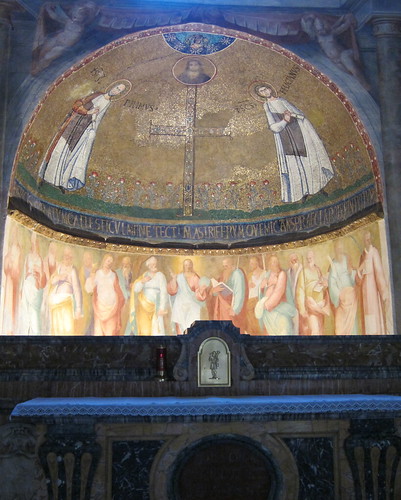
Image by Michael Tinkler
We visited the church of San Stefano Rotondo on Thursday to look at the frescoes – but I love the apse mosaic, too. Sts Primus and Felicianus flanking a gemmed cross, c. 630. The main fabric of the church is late 5th century, with MANY modifications.
The single-line inscription is interesting. I’m trying to remember whether other small apses have such brief inscriptions as well.